
Postdoctoral Associate, New York University (NYU, Center for Cybersecurity), Ph.D. (NYU, Mechanical Engineering), M.Tech. (IIT Kanpur, Materials Science), B.Tech. (VIT University Vellore, Mechanical Engineering)
Research Projects
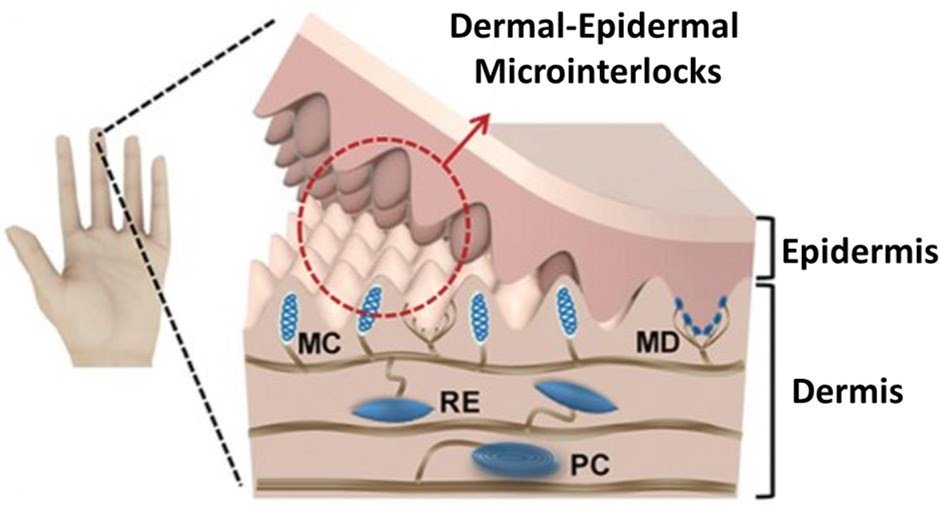
Human Skin-Inspired Soft Microinterlocks
The study deals with the deformation and fracture mechanics of skin’s microinterlocks using cohesive zone modeling. This approach demonstrated that microinterlocks enhance energy dissipation by managing crack propagation, crucial for developing sutureless skin grafts and electronic skin. The findings were initially presented at MicroTAS 2019 in Basel, Switzerland, and later published in Physical Review E.
- Publication:

Biomimetic Fracture Model of Lizard Tail Autotomy
My Ph.D. research on bioinspired tissue adhesives inspired by lizard tail autotomy gained global recognition, featured on the cover of Science journal and discussed in Clinical and Translational Medicine and Science Breaker. It attracted media coverage from The New York Times and The Independent. Additionally, a Science (AAAS) YouTube video highlighting this work has garnered over 319K views, demonstrating its broad impact with an Altmetrics score of 309. The research has been discussed several other journal’s perspective articles: Science (2022), Microscopy Today, Journal of Biosciences, Science (2024), and recently, in Nature.
- Publication:
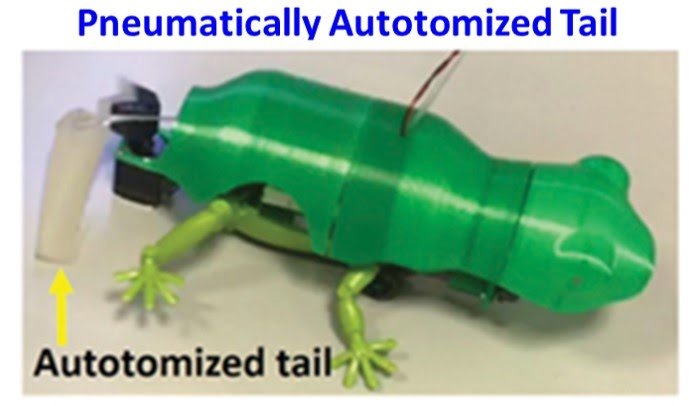
Lizard Tail Inspired Soft Robot
I worked on a soft robot inspired by lizard tail autotomy, featuring a pneumatically actuated bilayer patch with tunable microinterlocks, enhancing adaptability in adhesion. This innovation has applications in soft robotics and prosthetics. The work is published in Bioinspiration & Biomimetics.
- Publication:

Structural Attacks and Defenses for Flow-Based Microfluidic Biochips
This research focused on enhancing cyber-physical security for flow-based microfluidic biochips (FMBs) against structure-level threats. We demonstrated the first structure-based attack by modifying chamber heights, validated with fluorescence microscopy showing a strong correlation (R² = 0.987) in DNA amplification. Using deep learning for anomaly detection, we achieved about 96% accuracy. We also developed a device-level watermarking strategy, using fluorescence intensity-microchannel height correlation, to protect FMBs against IP-theft-based attacks. This research was published in IEEE TBioCAS.
- Publication:
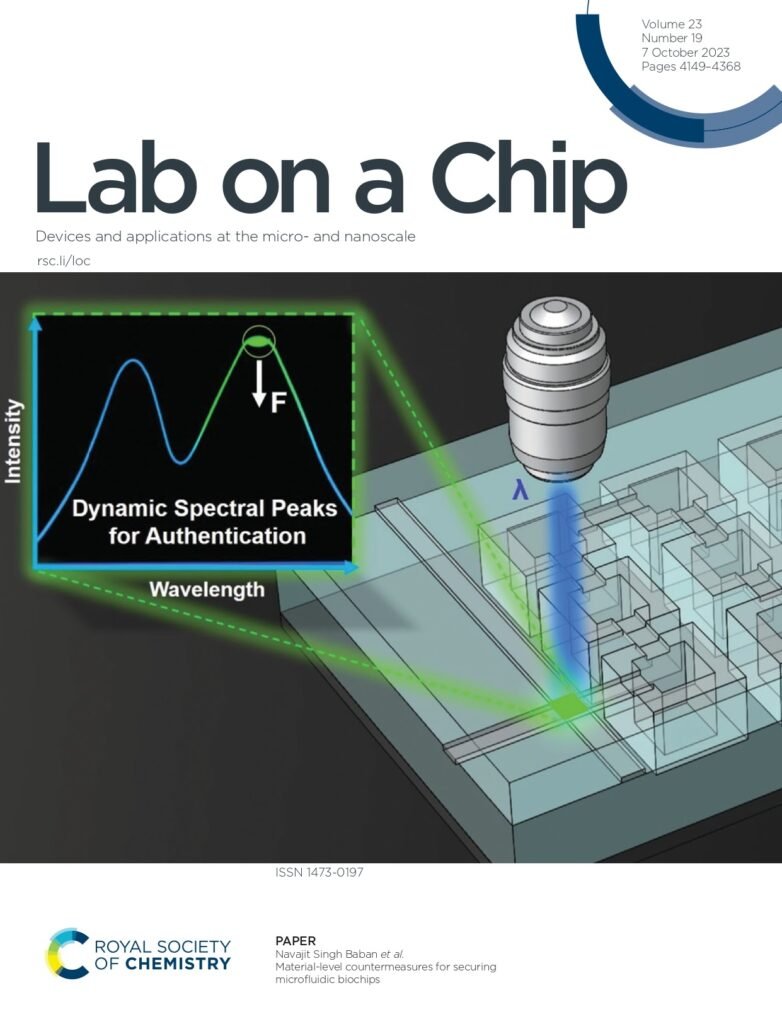
Material-Level Countermeasures for Securing Microfluidic Biochips
I worked on developing a dynamic material-level watermarking strategy for PDMS-based microfluidic biochips, utilizing a synthesized fluorescent perylene dye in microvalves. Our experiments demonstrated a robust correlation (R² = 0.971) between excimer intensity changes and mechanical strain, establishing an effective watermarking solution. Additionally, we implemented machine learning models to detect curing ratio-based attacks with over 99% accuracy. Our findings were prominently featured on the cover of the Lab-on-a-Chip journal.
- Publication:
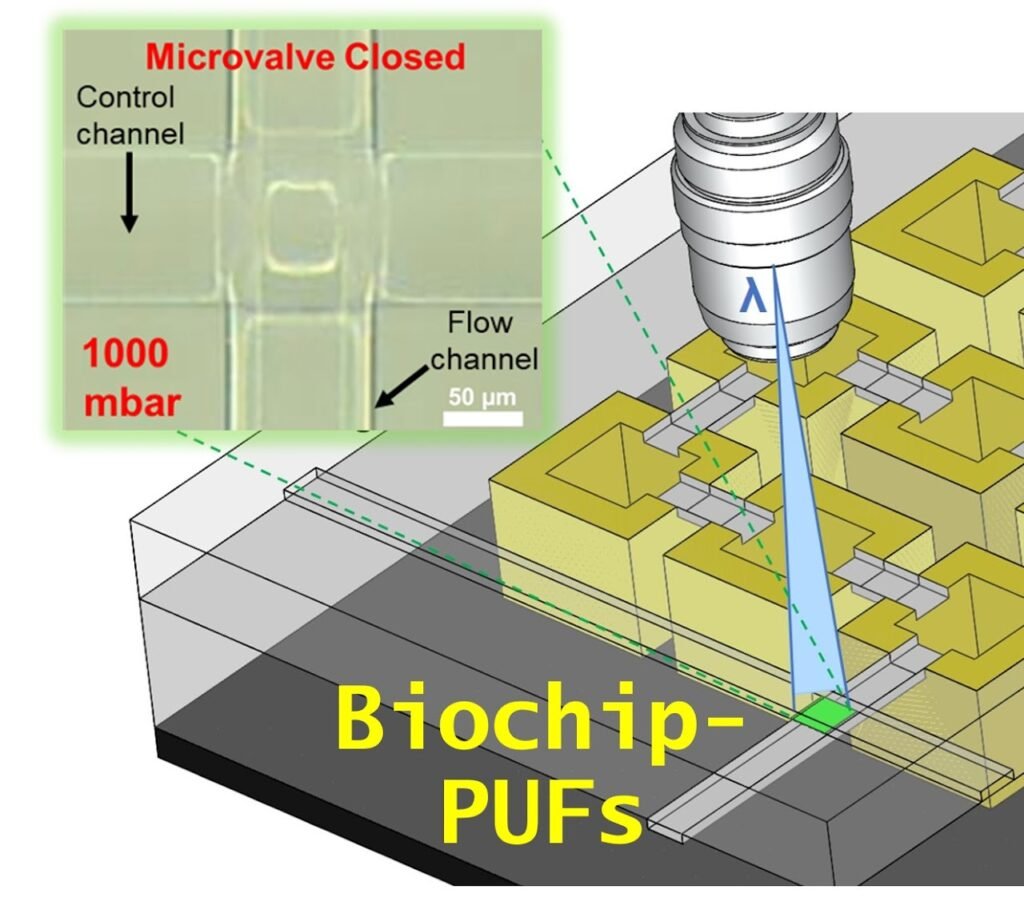
Physically Unclonable Functions for Microfluidic Biochips (Biochip-PUFs)
Biochip-PUFs enhance the security of flow-based microfluidic biochips by developing physically unclonable functions (PUFs) using the unique responses of microvalves due to fabrication variabilities. We use Comsol Multiphysics to align our Bio-PUFs with actual biochip behaviors and have introduced a method using transient microvalve actuations to enhance Bio-PUF authentication. Our work was recently presented at the IEEE International Test Conference in Anaheim, California.
- Publication:
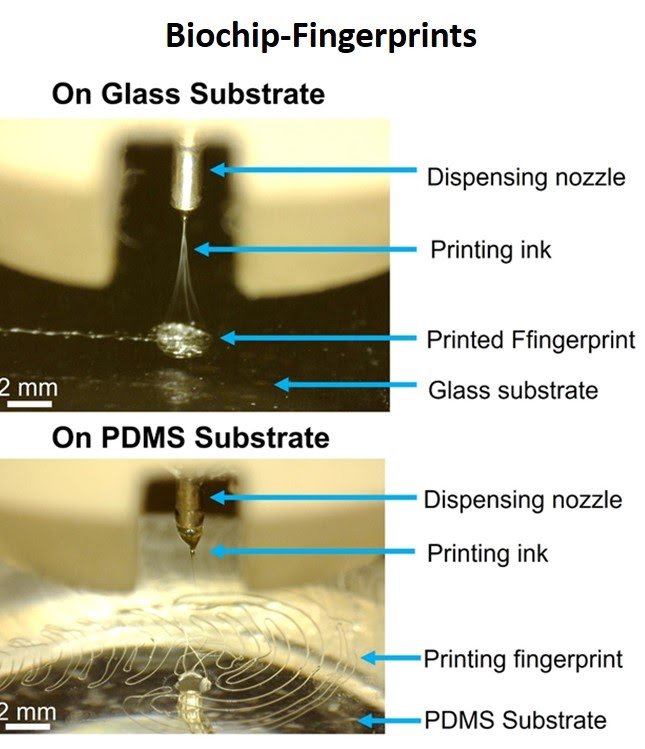
Authentication of Microfluidic Biochips Using Melt-electrospun Fingerprints
In this project, we developed a novel biochip authentication scheme using material-level fingerprints. We used melt electrospinning with polycaprolactone ink to create unique biochip fingerprints, enhanced with a protective polydimethylsiloxane layer for security. We achieved 99.9% accuracy using deep learning-based image processing for authentication and added a fluorescent dye to the ink for spectral security enhancements. This research was presented at the 2023 IEEE BioCAS conference in Toronto, Canada, and we’ve filed a provisional U.S. patent for this technology.
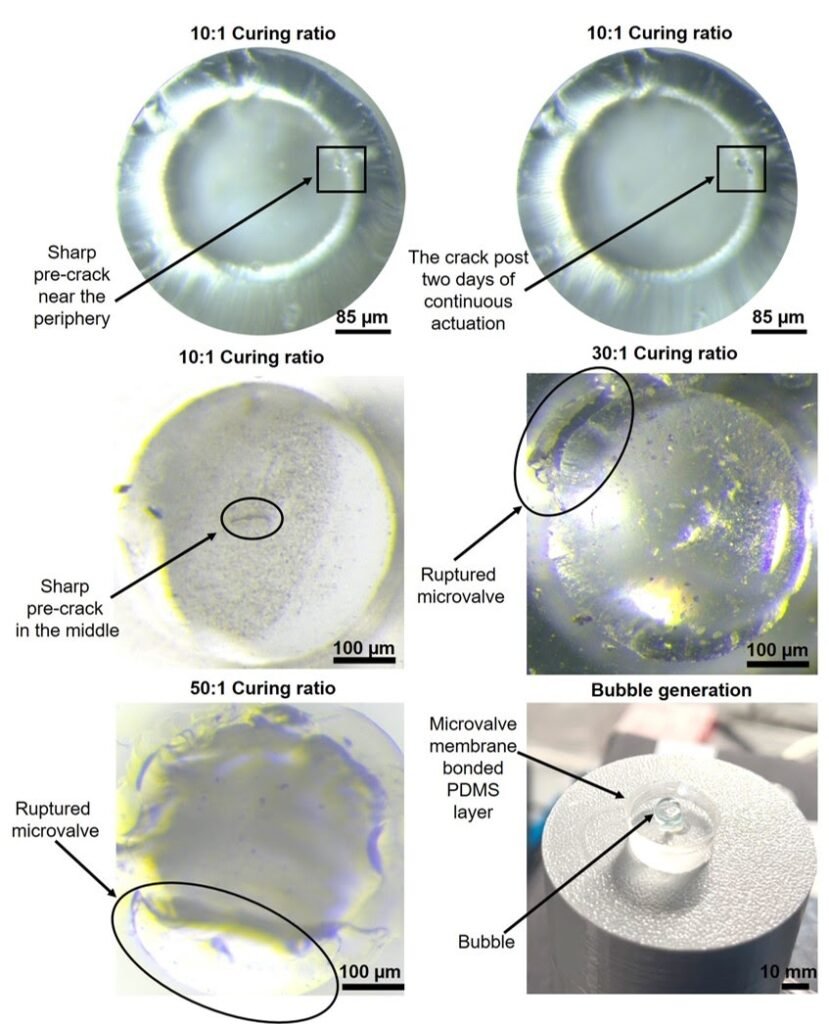
BioTrojans: Viscoelastic Microvalve Attacks in Microfluidic Biochips and Their Countermeasures
This work presents BioTrojans using microvalves in flow-based microfluidic biochips (FMBs) and associated countermeasures. The primary issue lies in the polydimethylsiloxane (PDMS) microvalves, which are susceptible to chemical tampering during their fabrication. We demonstrated how altered PDMS ratios create BioTrojan valves that fail under low-frequency actuations. To combat BioTrojans, we proposed a security-by-design strategy that includes smooth peripheral fillets to reduce stress concentration by over 50% and a spectral authentication method using fluorescent microvalves to detect tampering.
- Publication:
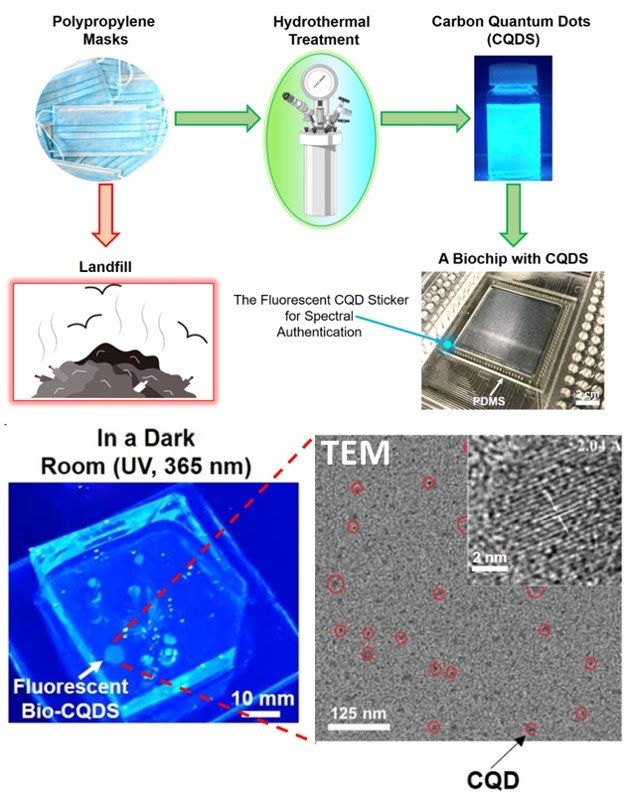
Carbon Quantum Dot (CQD)-Stickers for Biochip Authentication
This work presents fluorescent carbon quantum dot (CQD) stickers on a polydimethylsiloxane (PDMS) base for biochip authentication. These stickers, which can be plasma-bonded to glass and silicon biochips, feature a spin-coated PDMS layer for tamper-proofing yet remain detectable under UV light for spectral authentication. The scheme leverages unique excitation-dependent responses from CQD size variations, providing robust physical authentication. Our reliability studies on mechanical, photonic, and thermal degradation confirm the stability and effectiveness of this method. The preliminary work has been published in Green Chemistry.
- Publication:

Design, Automation and Cyber-physical Security of Digital Microfluidic Biochips (DMFBs)
In this project, we are exploring stealthy attacks that alter the surface wettability of DMFBs using smart hydrogels like poly(N-isopropylacrylamide), which remain undetectable at room temperature but disrupt microfluidic functions when heated. We are also examining plasma attacks that etch the superhydrophobic layer of DMFBs with a handheld plasma gun, causing denial-of-service without visible traces. Additionally, we are exploring shape morphing of droplets in DMFBs using COMSOL Multiphysics to uncover vulnerabilities, enhance detection methods, and develop robust countermeasures against these threats. In this work, we use shape morphing in DMFBs to enhance bioassay efficiency, allowing finer droplet control and reducing bioassay completion times. Our results are published in IEEE Transactions on Computer-Aided Design of Integrated Circuits and Systems.
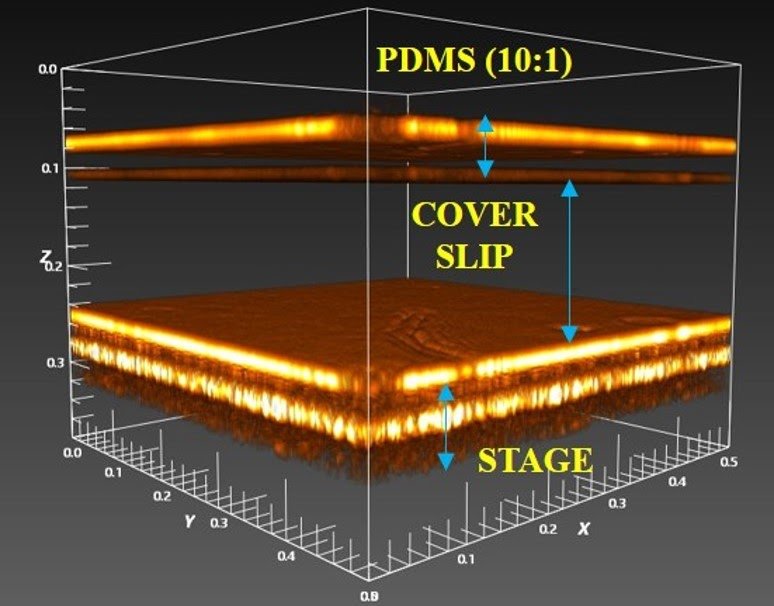
Optical Coherence Tomography (OCT)-based Anomaly Detection
We are developing an Optical Coherence Tomography (OCT)-based detection scheme for microfluidic biochips to identify subsurface anomalies non-destructively. Preliminary research shows OCT’s effectiveness in identifying subtle changes in microvalve thickness and material properties. By integrating OCT, we aim to establish a standard for ensuring the integrity and performance of microfluidic biochips in biomedical applications. In a recent work, we used optical coherence tomography (OCT) to detect structural and material vulnerabilities in DMFBs, providing a defense against security threats. The preliminary results are published in the Security, Privacy, and Applied Cryptography Engineering (SPACE) 2024 conference.
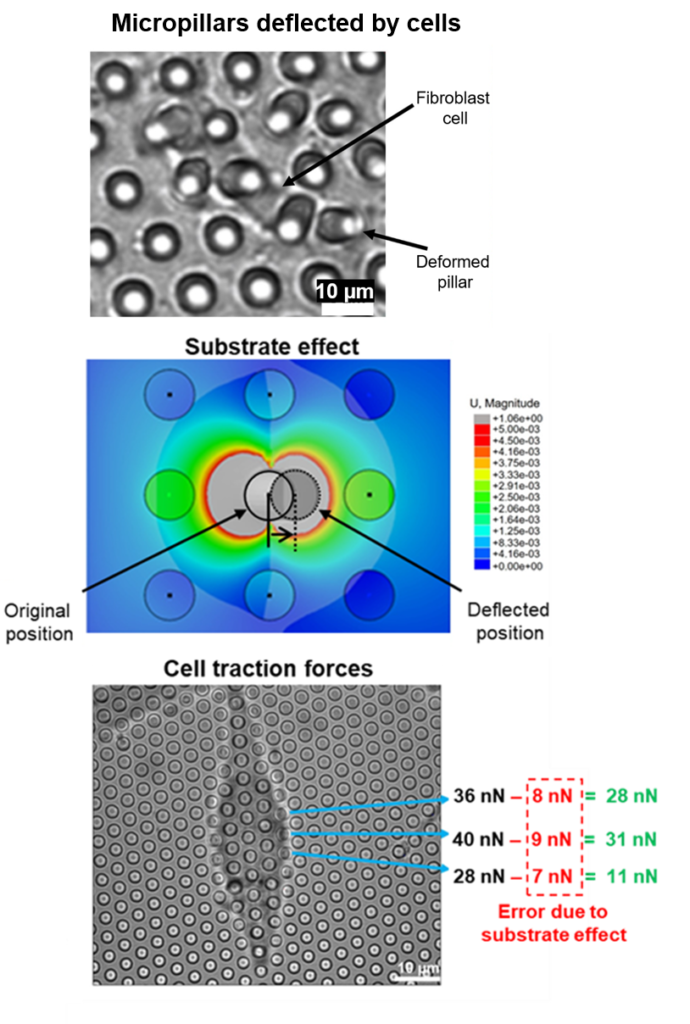
MechanoBioCAD: A Generalized Semi-Automated Computational Tool for Mechanobiological Studies
We present MechanoBioCAD as a micropillar-platform design tool based on the finite element method. Traditional beam bending models often inaccurately calculate forces, leading to significant errors. To overcome this, we developed MechanoBioCAD (MBC), a semi-automated tool utilizing the finite element method (FEM) tailored for micropillar applications. MBC automates model generation, analysis, and post-processing, enabling precise force quantification without traditional assumptions. It corrects common errors in conventional models, such as substrate deformations and incorrect load application, with proven error identification up to 34% in cell traction and C. elegans thrashing studies. MBC’s user-friendly interface makes advanced FEM accessible to researchers without specialized knowledge.
Click Here for the MechanoBioCAD (MBC) Codes.

Organoid-on-a-Chip
Using stem cells from autistic patients, we grow organoids/spheroids on a chip. With COMSOL Multiphysics, I simulate nutrient transport and analyze the effects of shear stress on organoid growth. We are currently enhancing the chip design using finite element packages. Through this chip, we aim to study the biophysics associated with autism and perform drug testing in vitro.

Non-replicable CQD-doped QR-codes for Authentication
We present non-replicable QR codes produced through a melt-electrospinning printing process, which generates unique outputs due to its inherent stochastic nature. Each print, even under identical conditions, results in distinct QR codes, making replication impossible. This ensures that, even with the same printer and settings, the QR codes cannot be forged. Additionally, when doped with fluorescent dye or quantum dots, these QR codes can be spectrally scanned, further enhancing their security against counterfeiting, overbuilding, and IP theft. We are currently developing this technology to authenticate medical and defense-related products for real-world applications.
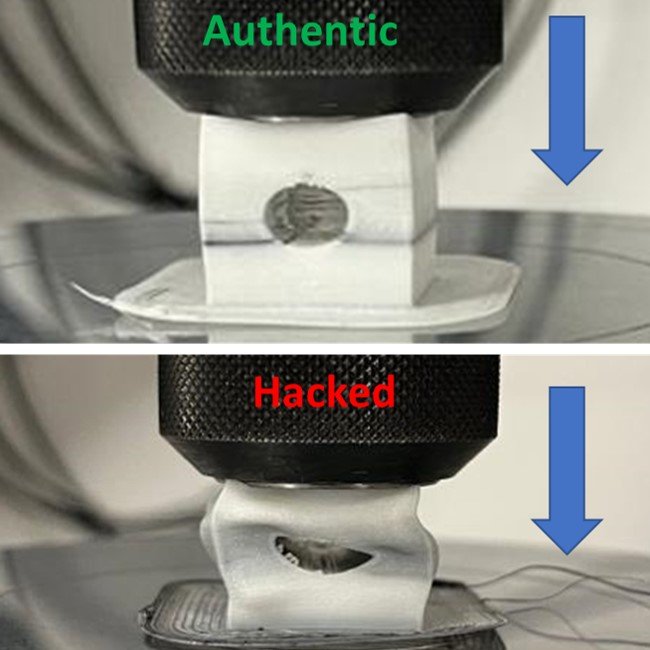
BioHack3D: Safeguarding 3D Printed Biochips
BioHack3D deals with enhancing the security of 3D printed biochips against cyber-physical attacks by addressing vulnerabilities in 3D printing technologies. These vulnerabilities can lead to tampering with digital files or altering the printing process, compromising the structural integrity and functionality of biochips. We demonstrated the attack by stealthily altering the design files, compromising the mechanical functionality to handle compressional loads, which in turn disrupted the biochips’ fluid mixing criteria. Looking at the landscape of digital additive manufacturing for biochip components, this research is important. For defense, we are working on using large language models (LLMs) to develop a robust and automated quality check scheme.
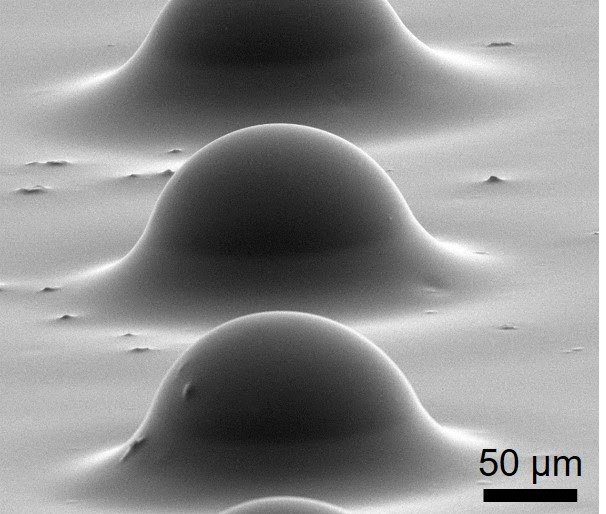
Biomimetic Lung-on-a-Chip
In this project, we are developing a biomimetic lung-on-a-chip using advanced microfabrication techniques to create microporous wells that mimic lung alveoli. Made from PDMS membranes and microfluidic chips, the device simulates oxygen transport through alveoli. We are mechanically characterizing these membranes, conducting experiments with controlled pressure sources, and using the data to inform computational models of pulmonary mechanics.

3D Bioprinting Security
This project explores vulnerabilities in the bioprinting process, understands the impact of stealthy attacks, and develops a robust security framework, including detection techniques and authentication schemes. We are identifying high-level vulnerabilities in state-of-the-art bioprinting processes that could lead to stealthy attacks. Our goals include demonstrating potential attacks, designing countermeasures, and building prototypes to validate security solutions.
- Email: nsb359@nyu.edu